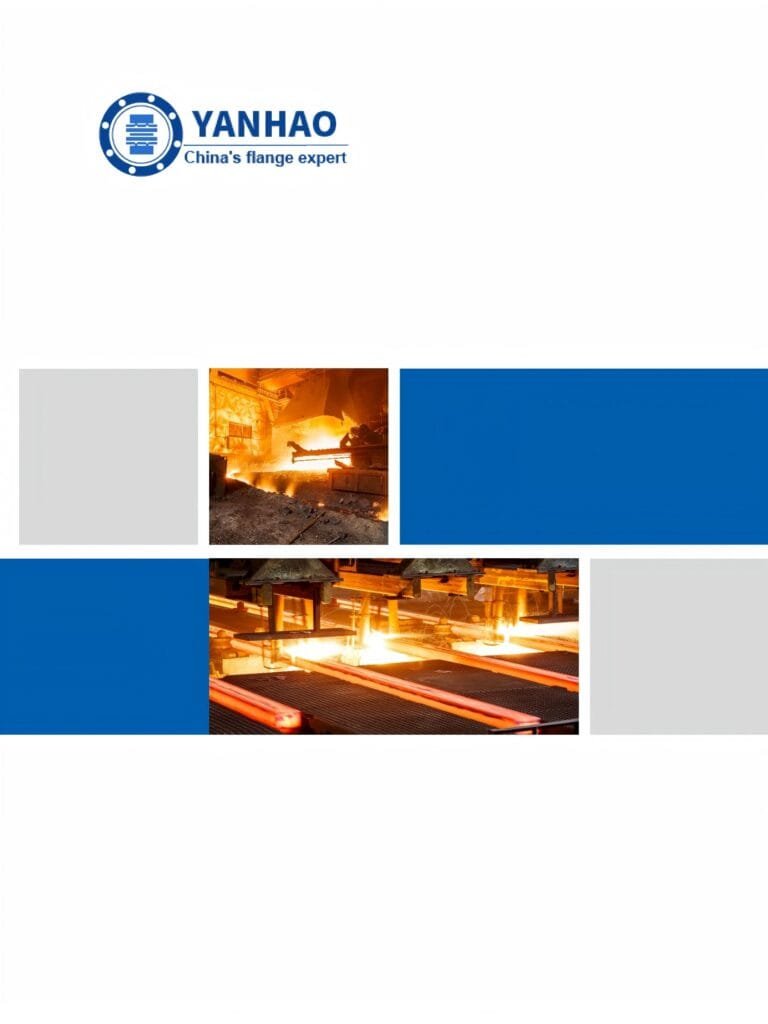Would there be any problems if we connect a carbon steel flange to a stainless steel flange?
Connecting a carbon steel flange to a stainless steel flange can pose challenges, primarily due to the differences in material properties and corrosion resistance. Here are some potential issues to consider:
- Galvanic Corrosion:
- The galvanic effect between stainless steel and carbon steel may lead to galvanic corrosion, especially in moist environments. This corrosion can compromise the sealing integrity of the flange connection, resulting in leaks.
- Material Mismatch:
- Different materials may have varying mechanical properties, including hardness and tensile strength. This disparity could lead to instability in the flange connection and potential sealing issues.
- Differential Thermal Expansion:
- Stainless steel and carbon steel have different coefficients of thermal expansion. This difference may result in stress accumulation at the flange connection due to temperature changes, increasing the risk of leaks.
- Bolt Corrosion:
- Contact between different materials can cause corrosion of flange bolts, making them difficult to disassemble and increasing the likelihood of leaks.
There are numerous visible hazards, so it is advisable not to make this connection if conditions allow. In the case of an emergency where connecting a carbon steel flange to a stainless steel flange is unavoidable, please follow the solutions below to prevent leaks.
- Select Appropriate Sealing Materials:
- Choose corrosion-resistant and high-temperature sealing materials, such as PTFE or metal gaskets, to reduce the risk of galvanic corrosion.
- Use Insulating Materials:
- Employ insulating materials like insulating gaskets between stainless steel and carbon steel flanges to prevent galvanic effects and reduce the risk of electrochemical corrosion.
- Control Tightening Force and Torque:
- Use the tightening force and torque recommended by the flange manufacturer to ensure a secure connection while minimizing stress and the risk of leaks.
- Choose Corrosion-Resistant Lubricants:
- Use corrosion-resistant lubricants on flange bolts to reduce thread corrosion and facilitate easier disassembly.
- Regular Inspection and Maintenance:
- Establish a regular inspection schedule to check for visible leaks, corrosion, or other issues at the flange connection and promptly address any issues.
- Adhere to Standards and Specifications:
- Follow industry standards and specifications to ensure that the flange connection complies with safety and performance standards.
- Consult with Professionals:
- If there are specific conditions or uncertainties, consult with engineers, metallurgists, or relevant professionals to obtain expert advice and support.
Conclusion:
In conclusion, while connecting carbon steel and stainless steel flanges is feasible, it demands careful consideration of potential issues such as galvanic corrosion, material mismatch, and thermal expansion differentials. Implementing appropriate solutions, such as selecting compatible sealing materials, using insulating components, and adhering to proper installation practices, can significantly mitigate these risks.
At YANHAO, we are committed to providing technical expertise and support for your specific challenges. Our team of professionals is available to offer guidance on material selection, installation procedures, and any technical queries you may encounter. Feel free to reach out to us for assistance, ensuring a robust and leak-free integration of carbon steel and stainless steel flanges in your systems.
Remember, your satisfaction and the performance of your systems are our priorities. For any technical inquiries or assistance, do not hesitate to contact us. We are here to help you navigate through any challenges and ensure the reliability of your installations.
Author: Lewis Liu
Hello, my name is Lewis Liu, and I’m a professional sales engineer with over a decade of expertise in the flange fittings sector.
I am quite informed about flange selection, installation, and maintenance. I am passionate about providing customers with the greatest solutions for keeping their pipeline systems running smoothly, safely, and dependably.
If you have any queries or concerns concerning flange fittings for your pipelines, whether they are about selection, material choice, specification requirements, or anything else, please contact me at any time. I am dedicated to providing expert advice and assistance to help you make educated decisions and reach your objectives.

